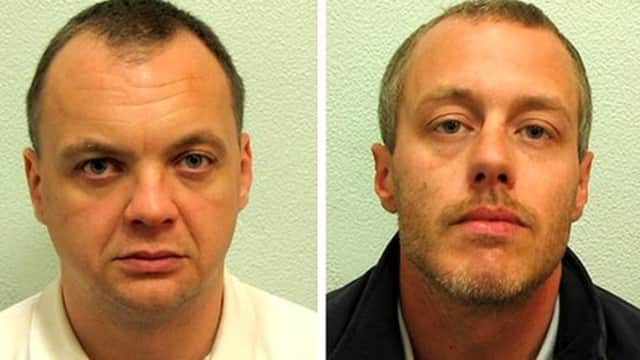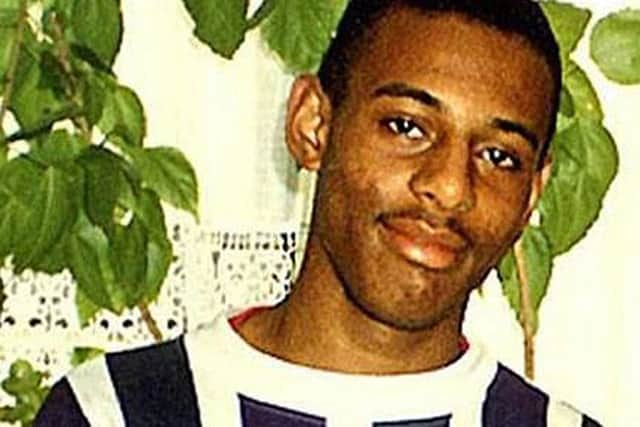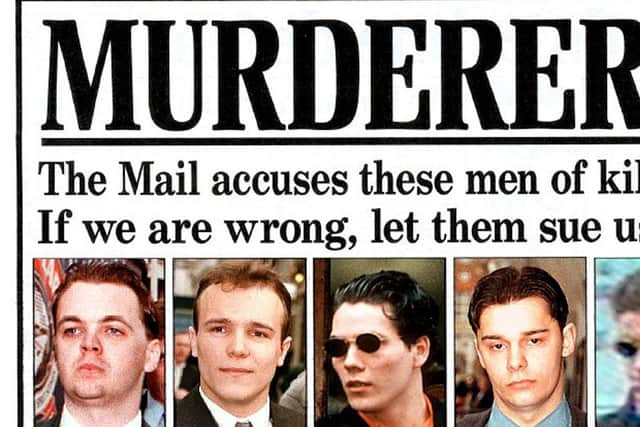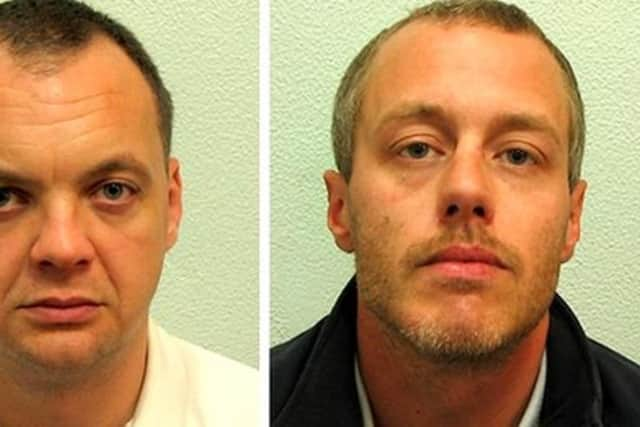Who killed Stephen Lawrence? When were killers Gary Dobson and David Norris convicted - and what happened


The Metropolitan Police have apologised for mistakes made during the original investigation into the racist murder of Stephen Lawrence in 1993 - and have named a new suspect in the case.
The Metropolitan Police said Matthew White was arrested twice over the murder, but on both occasions there was not enough evidence for a prosecution. This is what you need to know about what happened to Stephen Lawrence - and when his killers David Norris and Gary Dobson were finally convicted.
What happened to Stephen Lawrence?
Advertisement
Hide AdAdvertisement
Hide AdOn 22 April 1993, Stephen Lawrence was out in Eltham, south-east London with his friend Duwayne Brooks when they were attacked by a group of white youths at a bus stop.
Stephen was stabbed multiple times and managed to run just 100 metres from the scene before he collapsed and died. Brooks escaped uninjured.
In the days which followed Stephen’s murder, the police received several tip-offs from the local community about a gang who were believed to have been involved.


Who were the suspects?
The suspects were Gary Dobson, brothers Neil and Jamie Acourt, Luke Knight and David Norris.
Advertisement
Hide AdAdvertisement
Hide AdNorris was already suspected to have been involved in other racist attacks in the local area.
Brooks was able to serve as a witness in the incident and identified Neil Acourt and Luke Knight as attackers - the two men where then charged with murder within two months of Stephen’s death.
However, the Crown Prosecution Service (CPS) stated in July 1993 that Brooks’ identification was insufficient and the case was dropped.
The following year, Stephen’s parents Doreen and Neville Lawrence launched a private prosecution against Neli Acourt, Knight and Dobson.
Advertisement
Hide AdAdvertisement
Hide AdIn 1996, the private case was dismissed after the judge ruled that Brooks’ ID evidence was inadmissible.
On 13 February 1997, almost four years after the murder, the five suspects appeared at the inquest into Stephen’s death and refused to answer questions.
Nelson Mandela called for more to be done to get justice for the Lawrence family.
Following the five suspects’ failure to participate in the inquiry, the Daily Mail printed the famous “Murderers” front page, displaying the five men’s faces with the sub-heading: “The Mail accuses these men of killing. If we are wrong, let them sue us”.


Advertisement
Hide AdAdvertisement
Hide AdIn July 1997, home secretary Jack Straw launched The Macpherson inquiry into Stephen Lawrence’s murder, and the subsequent police investigation.
It found that there had been negligence on the part of the Metropolitan Police, with the 350-word Macpherson Report, released in 1999, stating that the investigation was “marred by a combination of professional incompetence, institutional racism and a failure of leadership.”
Of its 70 recommendations, mostly aimed at improving police attitudes to racism, 67 led quickly to changes in working practices or the law.
One of the biggest changes made subsequent to the report was the abolishing of double jeopardy in 2005 - a law that prevented an accused person from being tried again on the same (or similar) charges following an acquittal in the same jurisdiction.
Who was convicted of the murder of Stephen Lawrence?
Advertisement
Hide AdAdvertisement
Hide AdIn 2006, some 13 years after Stephen had been stabbed to death, the police were able to reopen the case into Dobson and Norris.
By this time, the group of former suspects had been charged for other crimes and new evidence had emerged related to their involvement in Stephen’s death.
Crucially, a blood spot on Dobson’s jacket was identified as Stephen’s, as were hairs found in David Norris’ bedroom. Norris had also been heard referring to ‘skinning’ black people, in a covert video taken in 1994.


Their trial began at the Old Bailey in November 2011, and after six weeks in court, Dobson and Norris were found guilty of murder in January 2012, both receiving life sentences.
Advertisement
Hide AdAdvertisement
Hide AdTwo of the three remaining suspects, brothers Neil and Jamie Acourt, have since served jail time for drug dealing, while Luke Knight has remained free.
What have police said about a new suspect?
The identification of Matthew White, who died aged 50 in 2021, came after a BBC investigation which claimed he had a central role in the case. White was first arrested over the murder in March 2000 and again in December 2013 but, on both occasions, the Crown Prosecution Service (CPS) advised there was no realistic prospect of conviction for any offence, the Met said.
In a statement prompted by the BBC investigation, Deputy Assistant Commissioner Matt Ward said: “The impact of the racist murder of Stephen Lawrence and subsequent inquiries continues to be felt throughout policing. Unfortunately, too many mistakes were made in the initial investigation and the impact of them continues to be seen.”
Following the 2012 convictions, trial judge Justice Treacy said: “On the evidence before the court, there are still three or four other killers of Stephen Lawrence at large.”
Advertisement
Hide AdAdvertisement
Hide AdWhite was first brought up in the investigation in May 1993 when he told officers he had visited the homes of two other suspects on the night of the murder, Scotland Yard said. He was seen by police officers when he refused to attend the Stephen Lawrence Inquiry before being re-interviewed during the post-inquiry investigation.
Between March and April 2000, White was arrested and interviewed under caution after new information was received from a new witness but denied any involvement in the murder. In May 2005, prosecutors advised that there was no realistic prospect of conviction of White for any offence.
Following the convictions of Norris and Dobson, a seven-year post-conviction investigation was launched.
In 2013 it was discovered that a Met officer who was not involved in the investigation team sent a message about a relative of White who may hold information in 1993. The relative was not named and was misidentified in what the Met has called a “significant and regrettable error”.
Advertisement
Hide AdAdvertisement
Hide AdIt was not until 2012 that the relative was correctly identified and new information was obtained.
The Met said White was arrested for a second time in December 2013 based on the new information but in October 2014 a further CPS advice file found that no further action should be taken.
In February 2020, White was seen and spoken to again but there was insufficient witness or forensic evidence to progress any further before he died in August 2021.
The Independent Office for Police Conduct (IOPC) announced in 2020 that, following an investigation launched in 2014, they had submitted a file of evidence to the CPS to consider whether four former police officers who were in senior roles at various times during the opening weeks of the murder investigation may have committed criminal offences of misconduct in public office.
In May 2023, the Met commissioned a routine forensic review of key exhibits to consider whether new scientific processes may advance the case.
